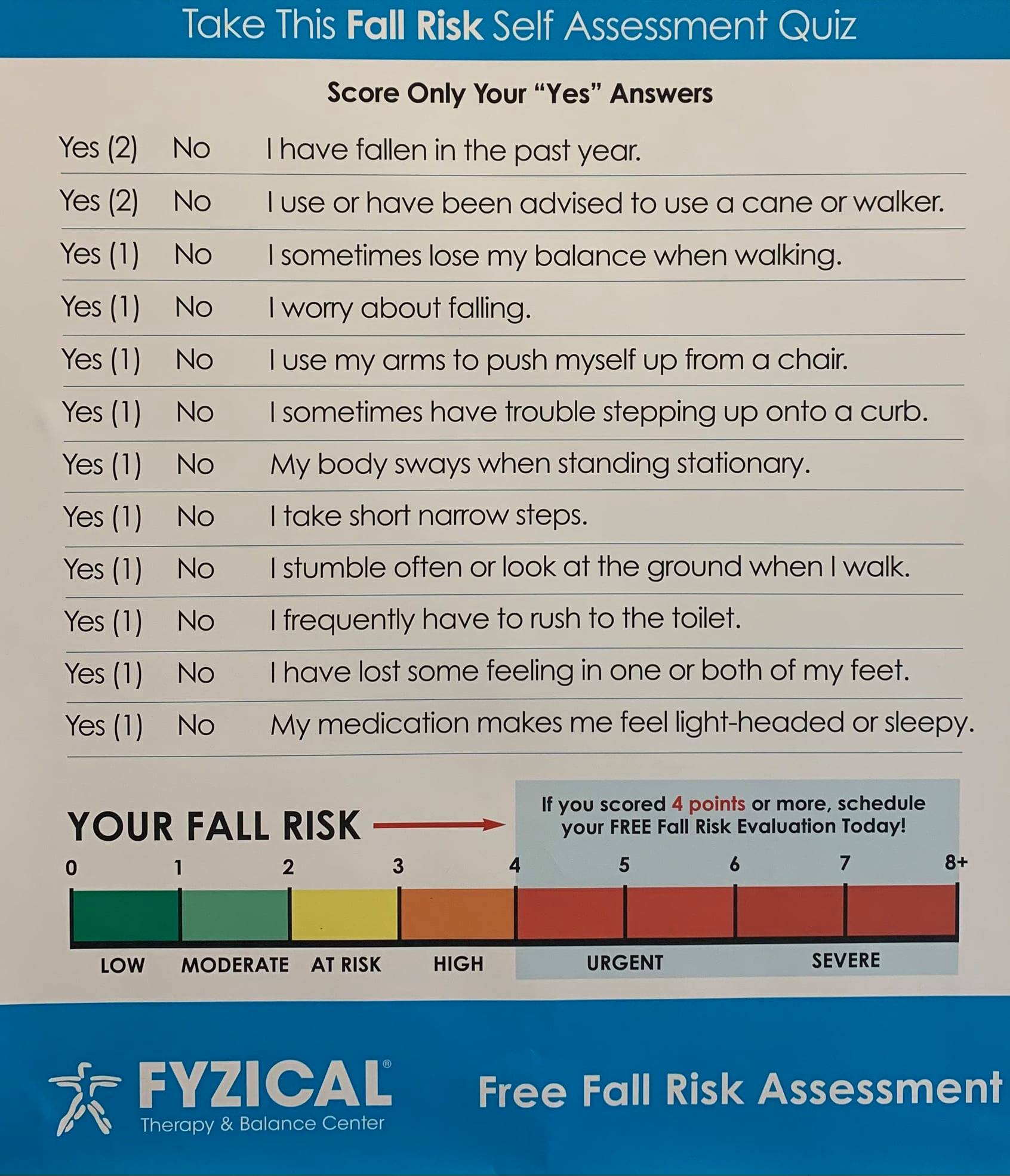8 Easy Facts About Dementia Fall Risk Described
Table of ContentsThe 5-Minute Rule for Dementia Fall RiskGetting The Dementia Fall Risk To WorkHow Dementia Fall Risk can Save You Time, Stress, and Money.The Single Strategy To Use For Dementia Fall RiskThe Greatest Guide To Dementia Fall Risk
Evaluating autumn threat helps the entire medical care group establish a more secure environment for each patient. Make sure that there is a marked area in your medical charting system where team can document/reference scores and document pertinent notes associated with fall avoidance. The Johns Hopkins Autumn Danger Assessment Tool is among numerous tools your personnel can use to assist protect against damaging medical occasions.Client falls in health centers prevail and debilitating negative occasions that persist despite years of effort to decrease them. Improving interaction across the assessing nurse, care team, person, and patient's most entailed family and friends might enhance autumn avoidance efforts. A team at Brigham and Women's Health center in Boston, Massachusetts, sought to develop a standardized fall prevention program that centered around boosted interaction and patient and family engagement.

The innovation group stressed that successful implementation relies on individual and staff buy-in, integration of the program right into existing workflows, and integrity to program procedures. The group kept in mind that they are facing exactly how to make certain continuity in program execution throughout periods of dilemma. Throughout the COVID-19 pandemic, for instance, a boost in inpatient falls was connected with limitations in individual involvement in addition to constraints on visitation.
Getting The Dementia Fall Risk To Work
These events are commonly considered avoidable. To apply the intervention, organizations require the following: Accessibility to Fall TIPS sources Fall ideas training and retraining for nursing and non-nursing staff, including new registered nurses Nursing workflows that enable person and family members involvement to perform the falls analysis, ensure use the avoidance strategy, and carry out patient-level audits.
The results can be very detrimental, frequently accelerating individual decrease and causing longer healthcare facility remains. One research estimated keeps increased an added 12 in-patient days after a client fall. The Fall TIPS Program is based on engaging patients and their family/loved ones across 3 main procedures: analysis, customized preventative treatments, and auditing to make sure that clients are taken part in the three-step fall avoidance process.
The individual assessment is based upon the Morse Fall Scale, which is a validated autumn risk evaluation device for in-patient healthcare facility settings. The scale consists of the 6 most usual factors clients in health centers drop: the client autumn background, risky problems (consisting of polypharmacy), use of IVs and various other outside tools, psychological standing, gait, and flexibility.
Each threat element relate to one or even more workable evidence-based treatments. go to my blog The nurse creates a strategy that integrates the treatments and is visible to the treatment group, client, and family on a laminated poster or published visual aid. Registered nurses develop the plan while meeting the person and the client's family.
The Single Strategy To Use For Dementia Fall Risk
The poster works as a communication device with other members of the patient's treatment team. Dementia Fall Risk. The audit part of the program includes analyzing the client's understanding of their threat factors and prevention plan at the system and medical facility degrees. Nurse champions perform at the very least 5 specific interviews a month with patients and their family members to examine for understanding of the fall prevention strategy

An estimated 30% of these falls result in injuries, which can vary in intensity. Unlike other adverse events that need a standard scientific action, autumn prevention depends extremely on the needs of the patient. Consisting of the input of people that understand the client best enables better customization. This technique has verified to be a lot more reliable than fall avoidance programs that are based largely on the production of a threat rating and/or are not adjustable.
Dementia Fall Risk Can Be Fun For Everyone

Based on bookkeeping outcomes, one website had 86% compliance and 2 sites had over 95% compliance. A cost-benefit evaluation of the Loss ideas program in eight health centers estimated that the program cost $0.88 per client to implement and led to cost savings of $8,500 per 1000 patient-days in direct costs associated with the prevention of 567 tips over 3 years and eight months.
According to the development team, companies thinking about carrying out the program must perform a readiness analysis and falls prevention spaces evaluation. 8 In addition, companies ought to guarantee the required infrastructure and operations for execution and create an application strategy. If one exists, the company's Autumn Avoidance Task Force must be involved in planning.
The 8-Minute Rule for Dementia Fall Risk
To begin, companies should make sure conclusion of training modules by nurses and nursing assistants - Dementia Fall Risk. Hospital staff should assess, based on the needs of a medical facility, whether to make use of a digital health record printout or paper variation of the loss prevention strategy. Executing teams need to recruit and train registered nurse champions and develop procedures for auditing and reporting on fall information
Staff need to be involved in the procedure of upgrading the operations to engage clients and family members in the evaluation and prevention strategy procedure. Equipment ought to remain in place so that units can recognize why an autumn took place and remediate the reason. A lot more particularly, nurses need to have networks to supply continuous feedback to both personnel and unit management so they can change and improve autumn prevention workflows and interact systemic issues.